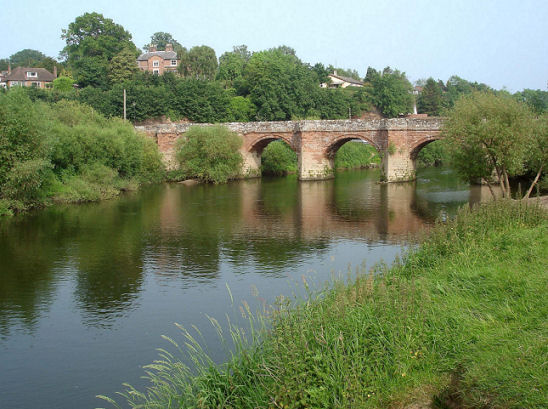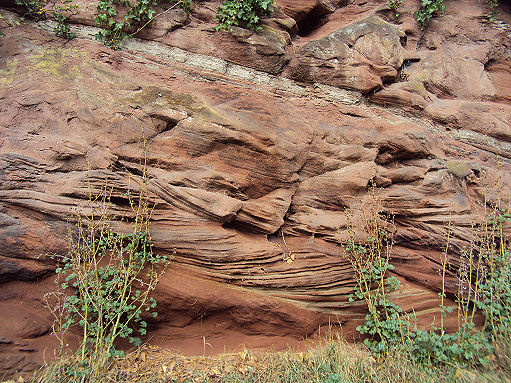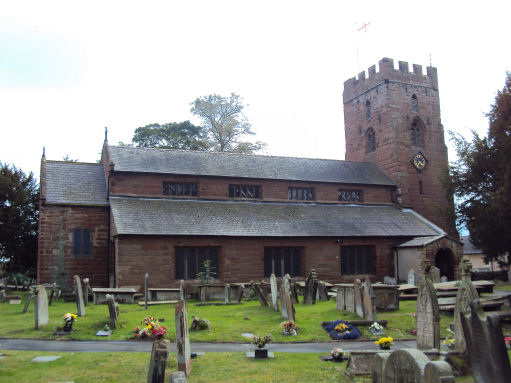Farndon
OS Grid ref:- SJ412545
The ancient village of Farndon lies very close to the border between England and Wales, the actual border is on the bridge which crosses the river Dee and which separates Farndon and the village of Holt. The position of the border has moved several times over the centuries, placing Farndon alternately in Wales and England. Consequently, Farndon has a Welsh name- Rhedynfre. The English name is said to mean "Fern Hill", and has been recorded as Fearndune, Farndune, Pharndoon, Ferentone, Ferendon, Faryngdon, and Ferneton, since its first documentary mention in 924AD.

The Anglo-Saxon king, Edward the Elder (the son of Alfred the Great) is said to have died at Farndon in AD 924, shortly after quelling a revolt of an alliance of Mercians and Welshmen. This involved Edward successfully taking Chester from the occupying Mercians and Welshmen. During the English Civil War, Farndon was to witness bitter fighting over the Bridge that was controlling access to Chester from Wales, the parish church contains a memorial window to the Royalists who died there.
Rock formations at Farndon Cliffs

Farndon Bridge was built in medieval times and spans the River Dee and connects Farndon to the nearby Welsh village of Holt. The red sandstone bridge is said to be haunted. Holt Castle, dating to the thirteenth and fourteenth centuries, stands on the opposite side of the river. During the Civil War, the castle fell to the rounheads in 1647. Adjacent to the bridge is a small picnic area situated beside the river. At the entrance to the picnic area are Farndon Cliffs. This area has been classed as a Site of Special Scientific Interest (SSSI). The sandstone cliffs contain interesting rock formations.
St Chad's Church, Farndon

The parish church of Farndon is St Chad's, some portions of the building date back to Sir Patrick de Bartun, a knight of King Edward III, whose effigy lies in the nave. The Church was damaged during the English Civil War and later repaired. The church contains a unique Civil War Memorial Window, and features an image thought to be that of William Lawes, the famous court musician, who was slain at the battle of Rowton Heath. The church tower still shows signs of Civil War musket ball damage
Nearby places of interest
Holt Castle , medieval ruins which lie just across the river from the village.
A riverside walk at Farndon
Distance -1.5 miles
Duration -about an hour
*Commencing from the public car park by the river at Farndon, exit the car park and proceed away from the medieval bridge with the river on your right and take the boardwalk through the trees. At the point the boardwalk winds away from the riverbank, take the path to the right and continue along the bank of the River Dee.
*Cross two stiles to arrive at a bridge on the A534. Ascend the steps and turn right to cross the river, then descend the steps on the Holt side. At the bottom turn right to the river and then turn left through a kissing gate, picking up the Holt Village Trail.
*Follow the path towards the right of Holt Castle after seeing the castle, continue up the narrow hedged path, emerging alongside the Holt Endowed School on the left.
*Bear right and follow main road passing the Peal O' Bells pub and St Chad's Church continue down this street to return to the car park.
